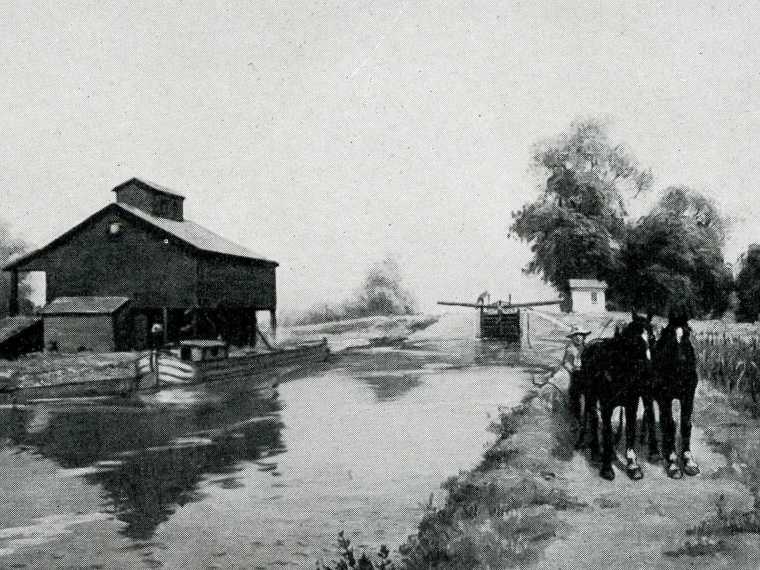Largely forgotten now, the Illinois and Michigan Canal was the subject of some of the United States’ earliest geopolitical maneuvering, determined Chicago’s location, nearly bankrupted the State of Illinois, created a land rush in Chicago and served for 50 years as Chicago’s sewer.
The canal was completed the same year as Chicago’s first railroad. This made the canal perhaps not obsolete, but somewhat redundant. However, canal boats could load and unload directly from the schooners crowding the Chicago River. Mule-drawn canal boats could also carry bulk cargoes such as grain, lumber, coal and stone a little more cheaply than the railroads. Thus the canal was a success.
Timeline
1673 Jolliet suggested that the Chicago Portage would be an ideal location for a canal to connect Lake Michigan to the Illinois and Mississippi rivers.
1795 The Treaty of Greenville between the U.S. and various Indian tribes ceded “one piece of land six miles square at the mouth of Chikago river, emptying into the south-west end of Lake Michigan, where a fort formerly stood,” and “from the mouth of Chikago, to the commencement of the portage, between that river and the Illinois.” It also allowed “the people of the United States a free passage …from the mouth of Chikago … down the Illinois river to the Mississippi ….”
1816 The U.S. gains the entire route from Chicago to the Mississippi with the Treaty of St. Louis.
1822 The U.S. government granted Illinois land for a canal to connect the Illinois River to Lake Michigan. Thus the name. In 1827 it granted additional lands for the state to sell in order to finance the canal.
1830s The Canal Commissioners platted and sold the lands in Chicago creating a land rush.
1836-1848 Construction of the canal started. The canal would go 96 miles from 27th and Ashland in Chicago to Peru, Illinois. Problems soon became apparent. The original plan was for the canal to drain out from Lake Michigan, then step down to the Illinois River in a series of locks. According to Jim Redd, after digging seven miles through the soft prairie soil, limestone was encountered. Rather than dig through the limestone, the canal was elevated. A lock was constructed in Chicago and water pumped up to fill the canal. The canal needed 17 locks and five aqueducts carrying the canal over rivers.
Money was borrowed to finance this enormous undertaking. As a result the State of Illinois nearly went bankrupt.



Add a comment to: The Illinois and Michigan Canal, 1673-1848: Technology That Changed Chicago